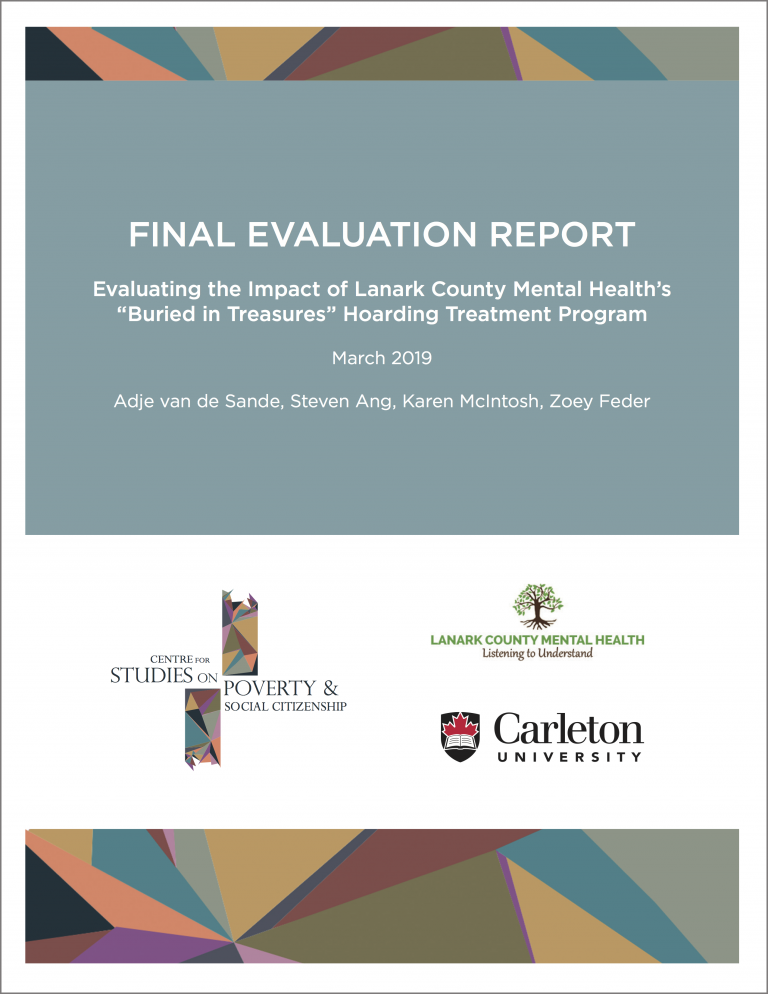Evaluation of “Buried in Treasures” Program
Evaluation of Lanark County Mental Health’s “Buried in Treasures” Hoarding Treatment Program
About the Evaluation

In 2019, with generous support from Ontario’s Local Poverty Reduction Fund (LPRF), the Centre for Studies on Poverty and Social Citizenship (CSPSC) conducted an evaluation of Lanark County Mental Health’s hoarding intervention group.
Offered to clients on-site in Smith Falls, Lanark County Mental Health’s hoarding treatment program is closely based on the “Buried in Treasures” hoarding treatment program (initially developed by Steketee and Frost in 2007). This is the first evidence-based mental health model for hoarding treatment.
Lanark County Mental Health’s hoarding treatment group aims to provide treatment that can allow individuals with moderate to severe hoarding behaviour to maintain their successes over the long term, preventing evictions and chronic homelessness within the Lanark County community.
Comprehensive hoarding programs in Canada are rare, and this program could possibly be on one of the first rural hoarding programs in the province of Ontario. Equally, this is one of the first studies of its kind. This evaluation is unique in its focus on hoarding treatment outcomes for a rural population.
The mixed-methods study was centred on a participatory approach, where mental health peer workers were involved in multiple phases of the research process including participating on a Research Advisory Committee and collecting participant data.
Research Team

Adje van de Sande
- Principal Investigator

Steven Ang
- Research Assistant

Karen McIntosh
- Research Assistant
Final Recommendations
Our qualitative analysis revealed that participants had an overwhelming positive experience of the BIT program and have made significant progress in addressing their hoarding behaviour since the completion of the program. Participants shared that the BIT program provided a sense of purpose, encouraged new level of self-awareness and also allowed them to connect their hoarding behaviours ti other mental health difficulties they face.
Our quantitative analysis revelaed that participants showed significant improvement on both he Hoarding Rating Scale (HRS) and Activities of Daily Living in Hoarding Scale (ADL) measures.
The Research Team provided some final recommendations to expand and build upon the positive impacts of the BIT program:
- Offering more BIT groups
- Expanding the BIT program staff
- Creating a volunteer program
- Developing a hoarding app

Read the full Final Evaluation Report